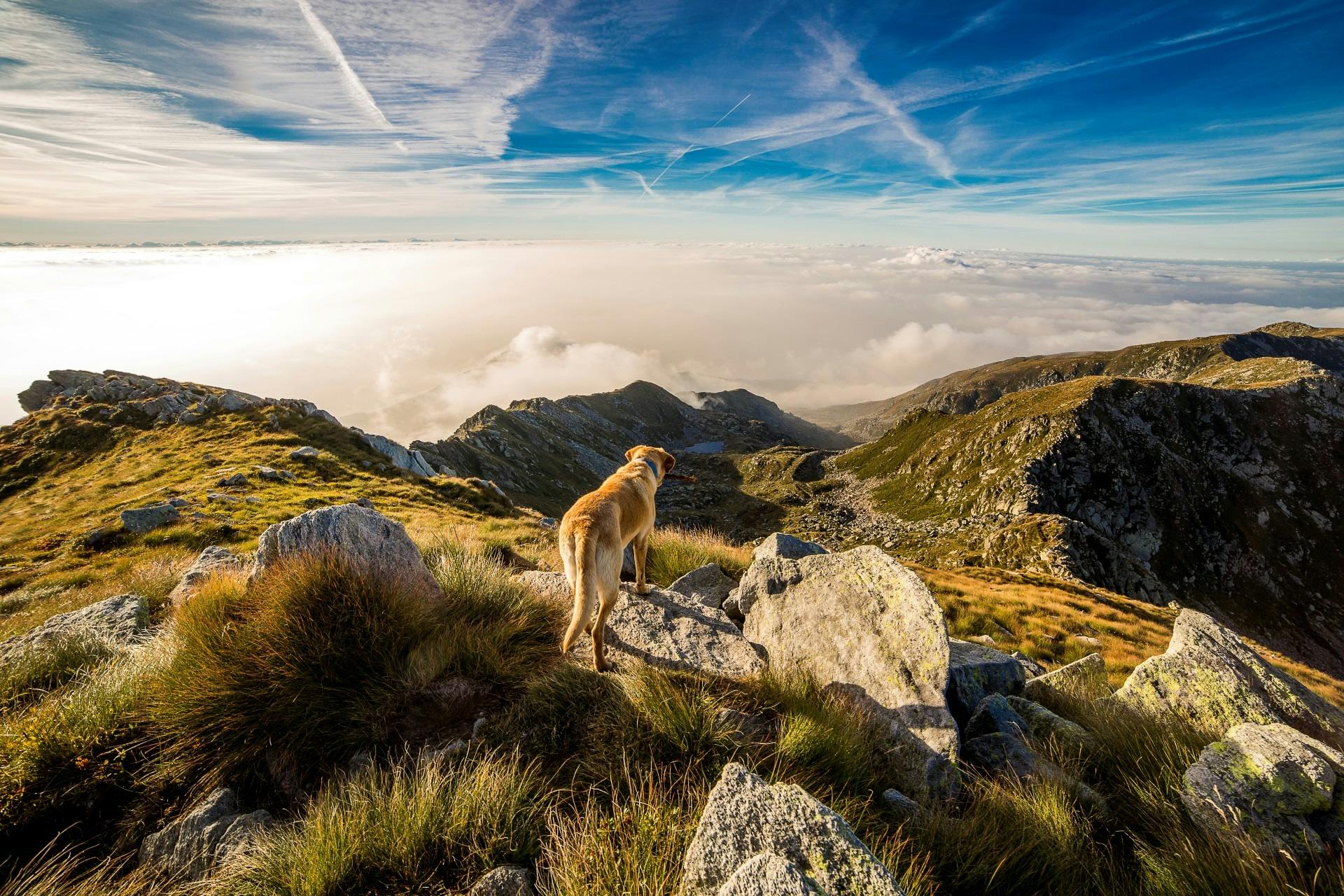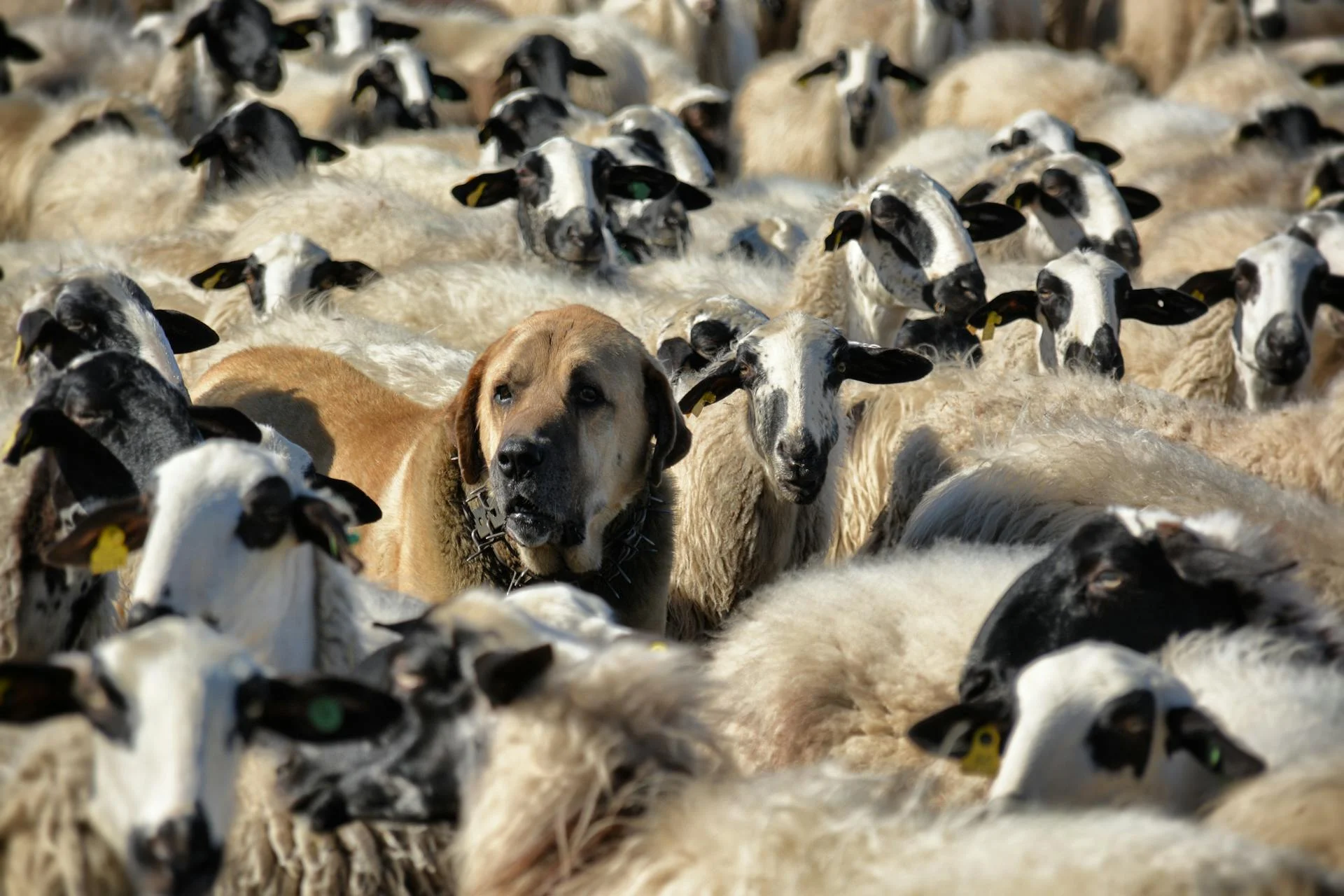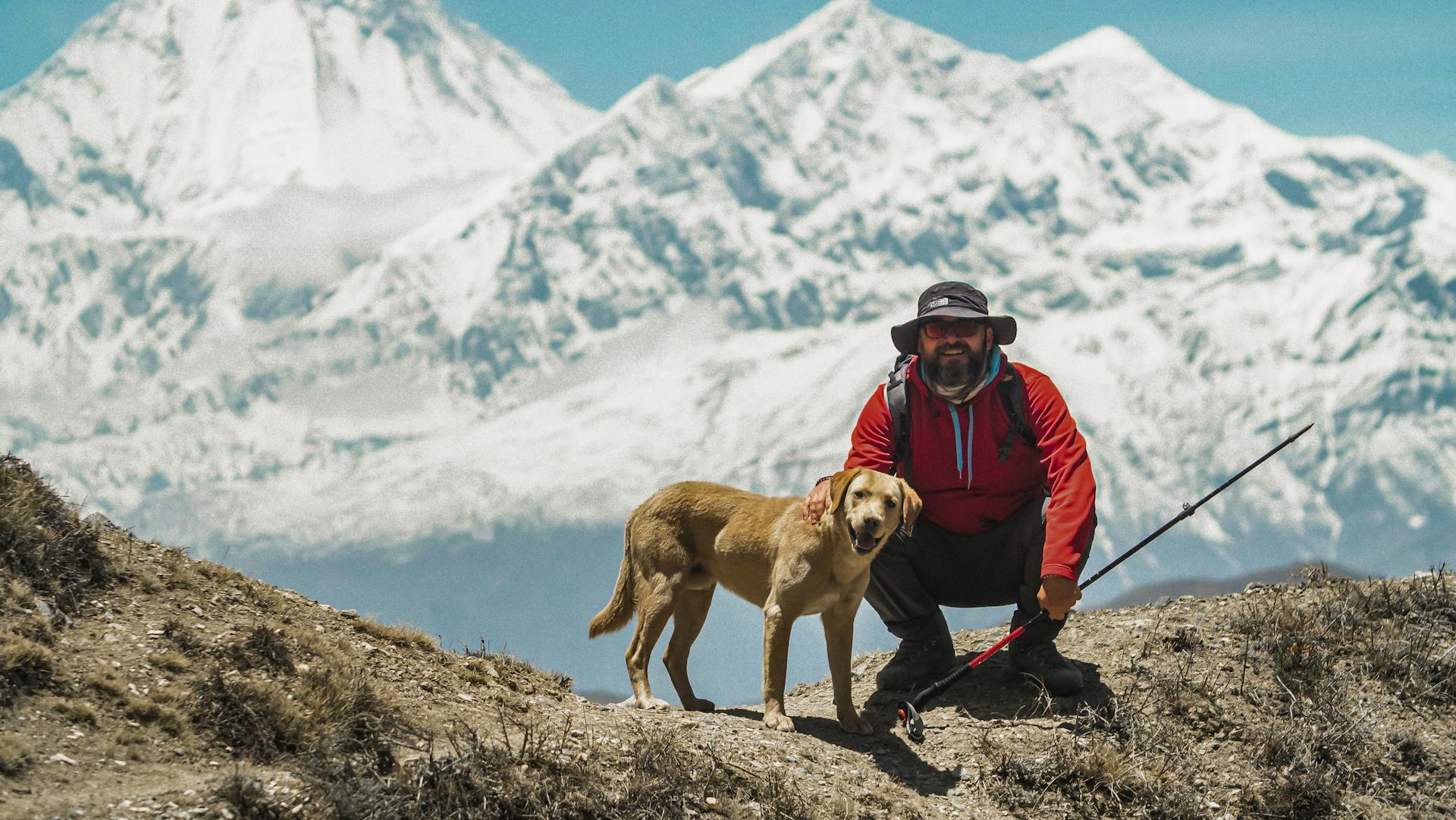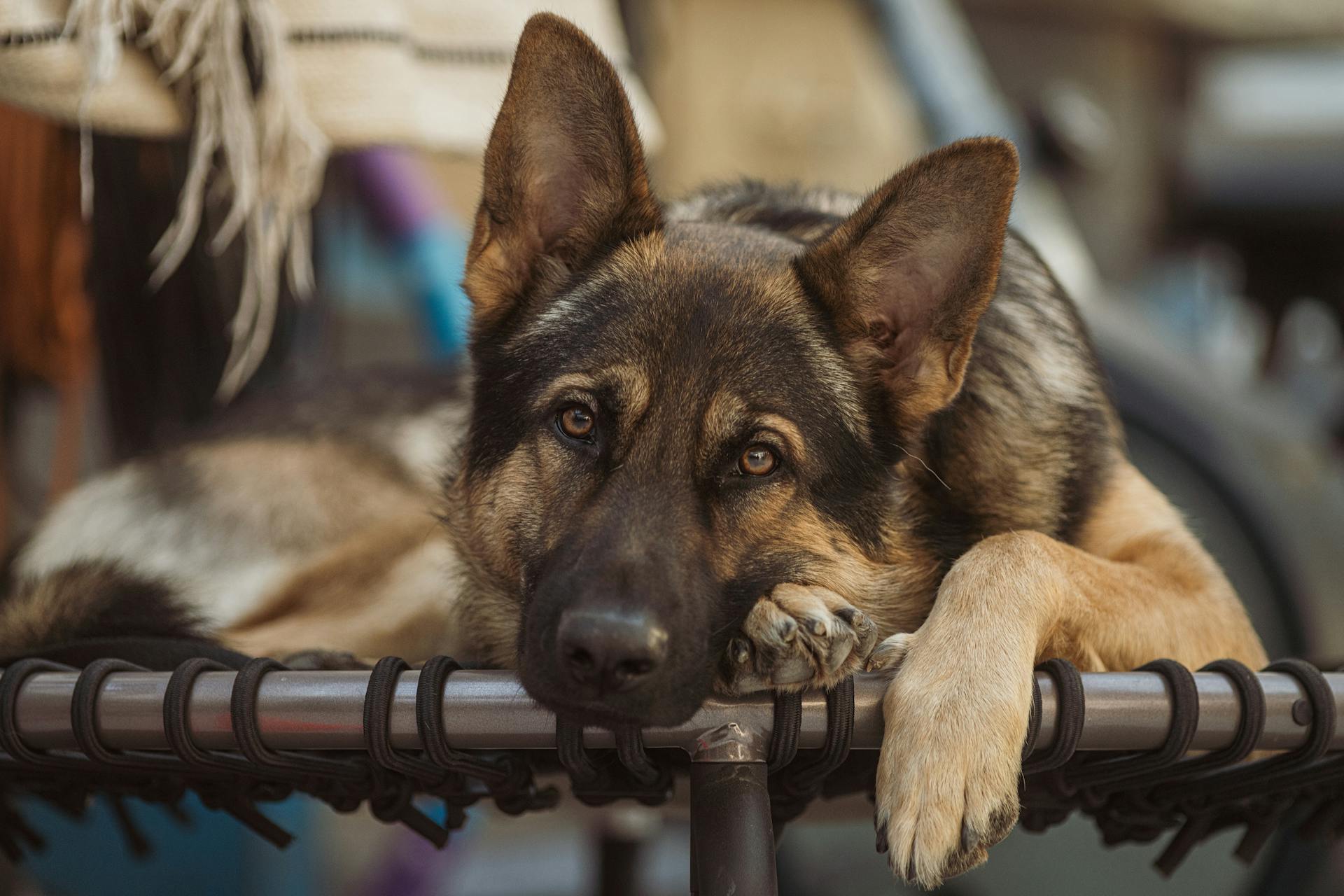
The Giant Caucasian Ovcharka is an impressive breed, but owning one is a significant commitment. They require regular exercise to stay happy and healthy, and they need a lot of space to move around.
These dogs are naturally protective of their families, but they can be wary of strangers. Socialization is key to helping them feel comfortable around new people.
Giant Caucasian Ovcharkas are intelligent and trainable, but they can be stubborn at times. Consistent training and positive reinforcement are essential for developing good behavior.
They thrive on attention and interaction from their family members, so be prepared to spend quality time with your Ovcharka.
Personality/Temperament
The Caucasian Ovcharka's personality is a complex mix of boldness and loyalty. They're fiercely protective of their family, but wary of strangers.
They're highly territorial and can be aggressive toward people they don't know. This breed needs early socialization to get along with other pets and people.
Despite their intimidating appearance, they're loving and soft with their family members. They'll be loyal companions, but only if you're willing to put in the effort to train and socialize them properly.
Their independent nature can make them stubborn, but with patient and dedicated owners, they can thrive. Don't expect them to back down from a fight, whether it's with a mailman or a wolf.
If you're an experienced dog owner, you might find the Caucasian Ovcharka to be a rewarding companion. But if you're new to dog ownership, this breed might not be the best fit.
Their lower energy levels make them a great choice for families with older children, but they still need regular exercise and mental stimulation to stay happy and healthy.
Early socialization is key to introducing a Caucasian Ovcharka to other household pets, and even then, it's not a guarantee they'll get along. But with the right training and care, they can be wonderful companions.
Family & Pet Compatibility
The Caucasian Ovcharka can be a great family pet, but it's essential to consider their size and potential aggression. They can grow up to 170 pounds, making them a large addition to any household.
If you have older children, a Caucasian Ovcharka may be suitable with proper training and socialization. However, they may not be the best choice for families with young children due to their potential for aggression.
Early socialization is key to introducing a Caucasian Ovcharka to other household pets. This can help increase the likelihood of a harmonious household, but it's not a guarantee.
Here are some guidelines to consider when introducing a Caucasian Ovcharka to your family:
- Age of children: Older children (over 6 years old) can be a good match for a Caucasian Ovcharka with proper training and socialization.
- Other pets: Introduce other pets to the Caucasian Ovcharka from an early age and ensure both are trained and socialized properly.
- Training and socialization: Invest time and effort into training and socializing your Caucasian Ovcharka to ensure they are well-behaved and gentle around children and other pets.
By following these guidelines and considering the unique needs of the Caucasian Ovcharka, you can create a harmonious and loving household for your entire family.
Care & Nutrition
Feeding your giant Caucasian Ovcharka requires careful consideration to ensure they maintain a healthy weight and prevent life-threatening conditions like GDV or bloat. Most large and extra-large dogs, including Caucasian Ovcharkas, should be fed two to three times daily.
Giant dogs need to eat more calories to maintain their weight, but overfeeding can be detrimental. It's essential to monitor their food intake and weight closely, especially if they're not working as livestock guardians.
To determine the ideal caloric intake for your Caucasian Ovcharka, consider their size and activity level. The table below provides estimates of daily caloric needs for males and females based on their activity levels:
Remember, these are general estimates, and your dog's individual needs may vary. Consult with a veterinarian or a qualified canine nutritionist to determine the best diet for your giant Caucasian Ovcharka.
Diet/Eating Habits
Caucasian Ovcharkas have specific dietary needs, especially when it comes to their large size and activity level. They require a well-balanced dog food, and most large and extra-large dogs should be fed two to three times daily.
Their caloric intake will greatly depend on their size and activity level. Males need anywhere from 2445 to 6515 calories per day, while females typically require fewer calories - between 2275 and 5930 calories per day.
See what others are reading: Giant Alaskan Malamute Size

To ensure their longevity and lifetime health, it's essential to feed them a large to extra large dog breed food. If they're not working as a livestock guardian, it's crucial to carefully watch their food intake and weight.
Here's a rough estimate of their daily caloric needs based on activity level:
Because these dogs were born to work and survive in rugged climates on marginal diets, they are prone to obesity in our modern society. So, it's crucial to monitor their food intake and weight closely.
Grooming
Grooming is an essential part of caring for a Caucasian Ovcharka. They shed quite a bit, so regular brushing is a must.
You'll want to brush your Ovcharka twice a week, with the occasional extra session during their heavy shed season. A pin brush, comb, and deshedder are must-haves for keeping their coat in top shape.
Their nails grow faster than average, so regular trimming is crucial to prevent splitting or cracking. Don't forget to check their nails regularly!
Intriguing read: Giant Dog Breeds That Don't Shed
Cleaning their ears is also vital, especially if they spend a lot of time outdoors. Dirt and debris can build up and cause painful ear infections if left unchecked.
Brushing your Ovcharka's teeth every few days is a good habit to get into. And, as with any dog, a professional tooth cleaning at the vet once a year is a must.
Regular grooming will help keep your Ovcharka looking and feeling their best.
Health & Conditions
The Caucasian Ovcharka is a relatively healthy breed, but their giant size comes with its own set of challenges. A new 2024 study found the median lifespan for the breed to be just 5.4 years, while other estimates have them in the 10- to 12-year range.
Responsible breeders will screen their dogs for genetic conditions and only use the best species for breeding, so be sure to ask for evidence that your Ovcharka's parents have had their hips and eyes evaluated.
The breed may be prone to health conditions like entropion, cataracts, hip and elbow dysplasia, and GDV due to their large size. Entropion is an inward-growing eyelid, while cataracts can cause foggy lenses and potentially lead to blindness.
Hip dysplasia and elbow dysplasia are common issues in large breeds, and GDV is a potentially deadly condition that arises when the stomach fills with gas and twists on itself.
Here are some health conditions to be aware of:
- Entropion
- Cataracts
- Hip dysplasia
- Elbow dysplasia
- GDV
History & Origin
The Russian Bear Dog, also known as the Caucasian Shepherd, has a rich history that spans thousands of years. They originated in the Caucasia mountain range, where they worked as livestock guardians protecting sheep and cattle from wolf attacks.
In the early 1920s, Europeans began to domesticate these Bear Dogs, and as they adapted to living with people, they transitioned from guarding livestock to protecting children and homes.
Consider reading: Giant Bear Dog Breed
Caucasus Region
The Caucasus Region is home to the majestic Caucasian Ovcharka breed. They hail from countries like Dagestan, Armenia, and Georgia. The Caucasus Mountains play a significant role in shaping the breed's history. The region's diverse geography and climate have influenced the breed's development over time. The Soviet Union was responsible for developing the breed in the 1920s with dogs from the Caucasus Mountains and Southern Russia.
Russian Bear Dog Origins
The Russian Bear Dog has a rich history that dates back to the mountain range between the Black Sea and the Caspian Sea, where they worked as livestock guardians.
They were originally used to protect sheep and cattle against wolf attacks, and later transitioned to protecting children and homes as they became domesticated by Europeans in the early 1920s.
The Russian Bear Dog is an ancient breed that originated in Caucasia, a region where they were highly valued for their bravery and loyalty.
In 1995, the United Kennel Club recognized the Caucasian Shepherd as an official breed, giving the Russian Bear Dog a new level of popularity among farm owners and military officials.
The Russian Bear Dog is closely related to the Caucasian Ovcharka, a breed that was traditionally used in Russia as both a livestock guardian dog and a property dog.
They were often employed by sheepherders to guard large flocks of sheep against predators like wolves, jackals, and bears.
Here's an interesting read: South Russian Ovcharka Dog
Interestingly, the Russian Bear Dog is more social than some other livestock guardian breeds, meaning they thrive under the direction of shepherds and work closely alongside them.
This breed has even found a place in dog shows across the world, where they are recognized for their unique characteristics and impressive heritage.
Central Asian Shepherd Dog
The Central Asian Shepherd Dog is nearly indistinguishable from the Caucasian Ovcharka by the untrained eye. They share ancestors and come from similar geographical areas, which has led to debates among kennel clubs about whether they should be considered the same breed.
The Central Asian Shepherd and the Caucasian Ovcharka are especially similar, but they are still considered separate breeds. This similarity has led to confusion among dog enthusiasts and breeders.
Many kennel clubs have been fighting for these dogs to be included under the same umbrella breed. This recognition would acknowledge their shared history and ancestry.
These breeds are often confused with one another due to their physical resemblance.
Take a look at this: Caucasian Shepherd Kennel
Interesting Facts
The Giant Caucasian Ovcharka is an impressive breed.
They were originally bred to guard livestock from predators in the Caucasus region.
This breed is known for its massive size, with males weighing up to 200 pounds.
Their thick coat is well-suited for the harsh mountain climate of their native region.
The Giant Caucasian Ovcharka is a loyal and protective companion, but it requires consistent training and socialization.
It's not uncommon for this breed to form strong bonds with their family, but they can be wary of strangers.
Appearance & Size
The Caucasian Ovcharka is a powerful breed, with males typically standing between 27-30 inches tall and weighing 110-170 pounds.
Their muscular bodies and thick coats are designed to withstand harsh environments, which is why you'll often see them with wolf-like markings.
Males are generally larger than females, with the latter standing between 25-28 inches tall and weighing 100-150 pounds.
Their heavy, large paws are a testament to their robust build, and the hair between their toes helps keep them protected and insulated.
The Ovcharka's broad chest and slightly tucked-under abdomen give them a dominant presence, making them a force to be reckoned with.
Size
The Caucasian Ovcharka is a large breed, with males standing between 27 and 30 inches tall.
Their height is just one aspect of their impressive size. Males weigh between 110 and 170 pounds, while females are slightly smaller, weighing between 100 and 150 pounds.
Appearance
The Caucasian Ovcharka is a powerful dog with a rather wolf-like appearance. They have heavy muscular bodies that help them thrive in harsh environments.
Their thick coats are a vital part of their survival, protecting them from the elements. The coat comes in short-, medium-, and long-haired varieties, with all three types being double coated.
Their legs and tail are feathered, and they often have fur between their toes, which helps keep them insulated. The paws are heavy, large, and have hair between their toes for added protection.
The Ovcharka's head is perhaps its most distinguishable feature, with a wedged shape and a blunt muzzle that gives them a bear-like appearance. Their eyes are deep-set, tilted, and typically brown in color.
Their ears are high-set and traditionally have been cropped, although ear cropping is now illegal in some areas of Europe due to the painful procedure involved.
Tail

The Caucasian Ovcharka's tail is quite distinctive. It's typically curled over the back in a hook-shape when the dog is excited.
Their tails should not be cropped, which is an important consideration for breeders and owners.
Frequently Asked Questions
How much does an Ovcharka cost?
The price of an Ovcharka can range from a few thousand dollars to $6,000, depending on the dog's lineage and breeding rights. Learn more about the factors that affect the Ovcharka's price and what you can expect from this majestic breed.
What dog breed is called the wolf killer?
The Caucasian Mountain Dog, also known as the Caucasian Shepherd or Charka, is a powerful breed with a reputation for being a "wolf killer". Known for its immense size and presence, this ancient breed is a formidable canine.
Are Russian bear dogs legal in the US?
Russian Bear Dogs are not inherently illegal in the US, but local regulations may prohibit ownership in certain areas. Check local laws before considering bringing one home.
Sources
- https://www.dogster.com/dog-breeds/caucasian-ovcharka
- https://www.dogbreedslist.info/all-dog-breeds/caucasian-ovtcharka.html
- https://petventuresbook.com/blogs/blog/complete-guide-the-caucasian-shepherd
- https://www.forloveoflivestock.com/blog/caucasian-ovcharka-livestock-guardian-dog-breed
- https://www.theepochtimes.com/bright/video-giant-200-pound-rare-caucasian-ovcharka-insists-that-hes-a-lap-dog-and-its-adorable-5594931
Featured Images: pexels.com


